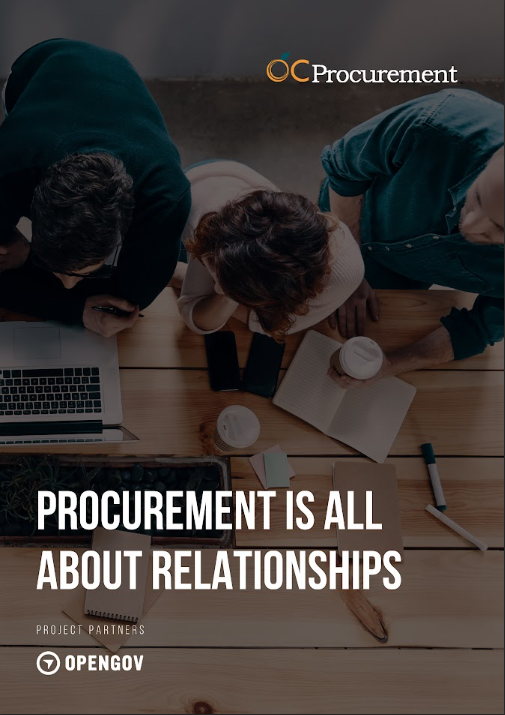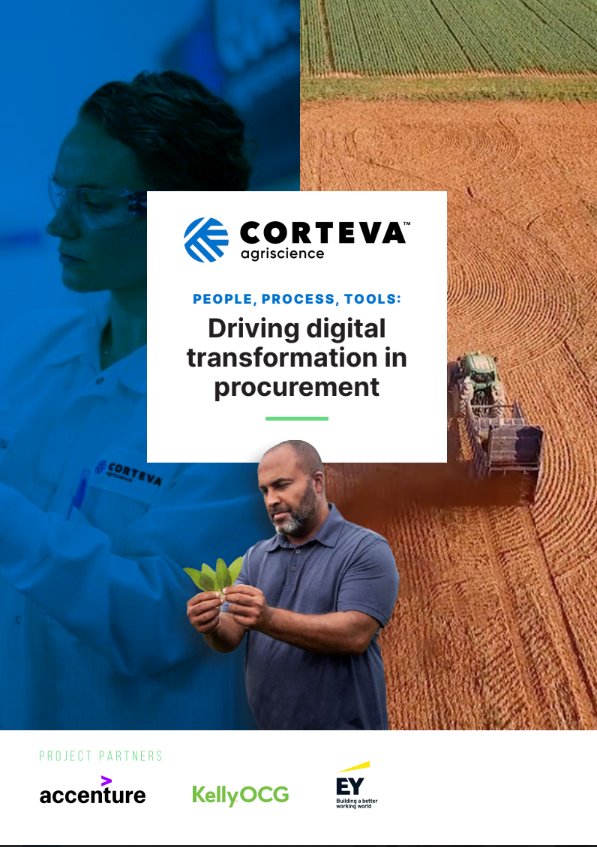Stop me if you’ve heard this one before; procurement has changed and has found itself moving beyond a simple cost center and has firmly secured a seat at the table in business. While that may be true, the conversation surrounding procurement has moved beyond simply pulling up a chair at the high-level meetings to answering the question: what more can procurement do to make businesses become leaner and more agile organizations? Organizations that are powered by smart technologies in order to mitigate risk and improve sustainability?
This is certainly the case for Mahmood Shah, Vice President of Procurement and Supply Management at SGS. As the world’s leading inspection, verification, testing and certification companies, SGS is the global benchmark for quality and integrity. With more than 94,000 employees, SGS operates a network of over 2,600 offices and laboratories around the world. It becomes very clear then, just how integral procurement is and has always been to SGS. The challenge is taking it further.
“This whole transformation will only succeed if there is an environment that promotes collaboration where everybody gains value from the constructive discussions that take place”
Shah joined the business back in 2019 having spent some of his younger years working for the likes of British Airways, BMW Group and MetLife in various supply chain and procurement disciplines. He was brought into SGS to help improve the maturity of the procurement function of SGS’ North American region. He intends to achieve this through process improvement, technology and improving the culture.
The first challenge for anyone looking to improve the maturity of anything, is to understand what is actually meant by maturity at all and how it can differ from company to company. Or, perhaps most importantly, how the different levels of maturity can offer valuable insight. “There remains a wide spectrum in levels of procurement maturity across every industry and harnessing the lessons learned from other companies can help the less mature functions to accelerate their growth. We have access to use cases that procurement leaders can refer to, and can gain an understanding of, tactics and strategies that are proven to work,” explains Shah. “Procurement leaders can use benchmarks that may not have been previously available, to help build business cases within the organization to improve the efficiency and effectiveness of their function.”

Shah points to a notion of being a trusted advisor for procurement and how it is one of the key ways to add value and to be seen as a forward thinking function. For him, it’s about understanding that role as there are often assumptions that ‘having a seat at the table’ means that procurement does everything the stakeholder asks of them. The reality is that procurement should be the one to challenge the norms and facilitate the collaboration between suppliers and the business. But it can only do this if it’s enabled through insight. “You have to be prepared to do your homework by understanding your company and business line goals and objectives, the challenges they are facing and the industry trends as well as accepting you may never know the current state of the business as well as your stakeholders,” he says. “Having that insight helps build your credibility with the business, especially where you’re talking about the future state. Most procurement leaders focus on the present state statistics only, which can lead to business stakeholders feeling as though you’re not adding real value because you’re not telling them anything that they don’t already know.”
“I believe lessons can be learnt from people that have already been there and done it and are considered trusted advisors within their own organizations, and using your network is one the quickest and most effective ways of acquiring that knowledge.”
Shah set out with a three-year strategy that was developed by interviewing stakeholders in order to understand their business challenges, their goals and objectives and their pain points. Then, he assessed the skills and the capabilities of his team using benchmarks to ascertain the maturity gap. Something he feels is very important to note.
Attention then turned to understanding SGS’ procurement performance versus what is deemed to be best-in-class using similar industry benchmarks. “As with any transformation program, you have three areas of consideration: people, process and technology and these are the three areas that I really focus on,” explains Shah.
“Our mission for global procurement is to maximize value and innovate with our suppliers and stakeholders, to drive efficiency and support profitable growth in a sustainable way. Sustainability is an integral part of the procurement mission statement”
“Together we explored how the function was being managed, the way we engaged our business stakeholders, how the operations were being managed and our effectiveness in managing and developing talent. These questions were digging deeper and deeper into each one of those areas. This approach allowed the individuals in my team to provide an accurate assessment of the current state of our procurement and vendor management function and provided a heatmap of opportunities for improvement.”
It’s incredibly important to Shah to acknowledge that this roadmap and journey isn’t based on his understanding, but the understanding of each and every person doing their job. It allows Shah to create themes that he will then look to improve upon across both sourcing and vendor management so that he can then explore the culture, the standardization, streamlining and the optimization of the sourcing and vendor management operations. He wanted to underpin all of that with a plan to develop and manage the procurement and supply chain management talent.
At the time of writing, Shah is only seven months into this journey. In that time, he has completed the analysis and has an outline of the current state. SGS now has a plan in place for the next three years and has already begun making changes. One such change is the introduction of regional category strategies. Shah has moved away from individuals managing multiple categories, to develop subject matter experts, by assigning one category per person and assigning them regional responsibility.
“This really helps my team to enhance their skills and their understanding of the category,” he says. “It helps to align these roles and their associated responsibilities with what one would find in the labor market and provides the opportunity for individuals to develop a deeper skill sets within category management, which is an area that I want my team to focus on.” This also provides an opportunity for Shah as a leader to be able to provide members of his team with greater opportunities for their own career paths. He now has the ability to ‘increase the skills in their toolbox.’
It becomes clear that for Shah, people are incredibly important to procurement. Again, stop me if you’ve heard this one before: people power procurement. For Shah, it really is more than words. The roadmap he has planned out for SGS champions the people for it is entirely dependent on them. This stems back to a sentiment he has carried with him throughout his entire career. “Early on in my career a manager asked me; what can I learn from the best leaders I’ve worked with? And what kind of working environments they had created,” he says. “I want to recreate that for the teams that I manage. This whole transformation will only succeed if there is an environment that promotes collaboration where everybody gains value from the constructive discussions that take place.”
Sometimes, that discussion can involve reluctance and pushback against what Shah is looking to implement. He takes this in his stride and finds that in most cases, some of the greatest value comes from those pushbacks. “You’re always learning from others. You may have a certain picture in your mind, but it won’t be the same as someone else’s,” he says. “Do you correct it? No. It’s about talking it through and making sure that we move forward together.”

While it is imperative for Shah that his procurement team are brought along this journey, the importance of having the right technology cannot go unnoticed. Often seen as the ‘sexy’ part of a procurement transformation story, the approach to technology can make or break the whole process. SGS already utilizes e-procurement and e-sourcing suites and analytics tools. What Shah’s working on is a collaboration with the global procurement excellence team that is looking at pushing the technology processes even further. As such, SGS is currently working with Tradeshift to improve the efficiency of invoice processing by 25% as well as SHI International to help streamline the process of securing IT software (such as laptops and desktop suites), a process that previously took up to six weeks to complete and now takes just 3 days.
“If you actively participate in the change management programs, you get to influence it, rather than sit on the periphery and wait for impact to happen to you”
One of the more significant technology partners has been Alekstra. SGS required a dispersed wireless service management process as a result of issues such as low user satisfaction, long lead times, poor customer service levels and high costs. “We partnered with Alekstra to introduce a more holistic process framework,” says Shah. “We now have a browser based online portal running on Alextra’s platform which is very customer-centric. That’s a key theme of what procurement’s trying to establish.”
As an example, SGS no longer requires anyone to pick a mobile phone plan or remember to activate international services when working. Elsewhere, its finance department can automatically upload invoices to their ledgers through this portal.
“As a result of working with Alekstra, we have seen a tremendous benefit in reducing our wireless bill by about 31%. It’s really helped us, because it’s a showcase for us when it comes to technology leadership and it’s something that we can share with some of our affiliates across the globe in terms of what we could do when we have good partnership.”
SGS is a world leader in inspection, verification, testing and certification. It is also the global benchmark for quality and integrity. Sustainability runs deep within the company’s very veins. But sustainability is often the one topic that gets lost in the stories of procurement transformation. Technology, people and process take all the plaudits, but sustainability is becoming increasingly important to how a procurement function operates, and it goes without saying how that responsibility is only magnified within SGS.
In fact, the company’s very own Paula Ordonez Crespo, Global Head of Corporate Sustainability, described what sustainability means to her. “Organizations must recognize that their role is no longer delivering shareholder value alone but creating value for all stakeholders and giving back, at the very least, what their operations take from society.”
For Shah, this is a powerful statement that creates a truly noble cause for him and his teams to follow. “Our continued leadership in sustainability is something that everybody at SGS is proud of and it’s a great motivator for us as well. It’s part of the very fabric of what we do and has resulted in SGS being recognized as an industry leader in the Dow Jones Sustainability Index for six years in a row” he says. “Our mission for global procurement is to maximize value and innovate with our suppliers and stakeholders, to drive efficiency and support profitable growth in a sustainable way. Sustainability really is an integral part of the procurement mission statement.”
So how is sustainability reflected within this three-year procurement strategy? SGS will look to reduce over 5% of all greenhouse gas across North America. It will achieve this by replacing fleet vehicles, recycling technology hardware, implementing energy efficient lighting, and exploring the use of renewable energy sources. “We are also integrating sustainability into our sourcing process and have set ourselves high standards as an organization,” says Shah. “We have a comprehensive list of metrics that quantify and demonstrate our value to society.”
Despite the considerable successes achieved so far and the changes implemented, Shah and SGS still find themselves at the very start of this procurement journey. Over the course of the next three years, much more will change. Some of those changes will be anticipated, with processes factored in to mitigate and embrace these changes, but others may be unforeseen. These changes will be the ones that Shah feels will truly empower SGS’ NAM procurement function. “You need to take a long-term view of where you are headed, but still be agile enough to pivot at any point in time,” he says. “You have to be flexible. It would be great to just move from accomplishing one milestone to the next but things rarely work out that way.”

When all is said and done, it will always boil down to people for Shah. As noted above, he is a firm believer of surrounding yourself with the best people, learning from them and then stimulating that environment so that you continue to learn together. In procurement, professionals now have a position in which they can influence change and drive innovation, but only if they do what’s necessary to enable that. “If you actively participate in the change management programs, you get to influence it, rather than sit on the periphery and wait for the impact to happen to you,” he says.
“That’s how you actually navigate through the changes that take place. The benefits are many, you gain a better understanding of the challenges you are facing, you learn from your mistakes and successes, and you move forward, together as a team.”









